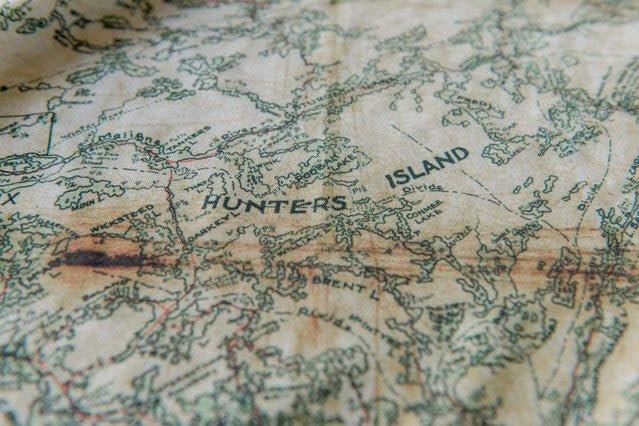
The History and Formation of the Boundary Waters Canoe Area Wilderness
Jerod ArlichShare
Introduction
The Boundary Waters Canoe Area Wilderness (BWCAW) stands as one of America’s most iconic and pristine wilderness areas. Located in northern Minnesota, this network of interconnected lakes, rivers, and forests has captivated generations of adventurers, conservationists, and Indigenous communities. The BWCAW’s rich history reflects the evolving relationship between humans and nature, highlighting the importance of preserving natural spaces. This article explores the formation, historical milestones, and ongoing efforts to protect this extraordinary wilderness.
The Indigenous Roots of the Boundary Waters
Long before the establishment of the BWCAW, the region was the ancestral homeland of the Anishinaabe people, also known as the Ojibwe or Chippewa. These Indigenous communities relied on the waterways for travel, trade, and sustenance. The region’s interconnected lakes and rivers served as vital trade routes for centuries, fostering cultural and economic exchanges.
For the Anishinaabe, the Boundary Waters held profound cultural and spiritual significance, which persists today. As settlers arrived and industries developed, Indigenous people were displaced, yet their ties to the land remain integral to its story.
Early Protection Efforts (1900-1940)
The first official steps to protect the Boundary Waters came in the early 20th century. In 1902, the U.S. Land Office withdrew 500,000 acres of land from settlement to preserve its natural beauty. Between 1905 and 1908, another 659,700 acres were set aside, laying the groundwork for conservation in the region.
In 1909, President Theodore Roosevelt designated the Superior National Forest, which encompassed much of what would later become the BWCAW. The Minnesota Legislature also established the Superior Game Refuge, further limiting development in the area. These actions reflected a growing recognition of the region’s unique ecological and recreational value.
The Role of Federal Legislation in Shaping the BWCAW
Federal legislation played a pivotal role in defining and protecting the Boundary Waters. The Shipstead-Newton-Nolan Acts of 1930 and 1933 were landmark laws that restricted logging and exploitation along shorelines, preserving the area’s natural vistas.
In 1948, the Thye-Blatnik Act enabled the federal government to purchase private lands within the region, expanding public ownership and protection. These early legal frameworks set the stage for the BWCAW’s inclusion in broader conservation efforts.
The Wilderness Act of 1964 and Its Impact
A major milestone came in 1964 with the passage of the Wilderness Act, signed into law by President Lyndon B. Johnson. This legislation established the National Wilderness Preservation System (NWPS), including the Boundary Waters among the original nine million acres of protected land.
However, compromises allowed some incompatible activities—such as motorized boating, logging, and mining—to continue within the BWCAW. While the designation marked significant progress, it also highlighted the need for further protections.
The Boundary Waters Canoe Area Wilderness Act of 1978
Recognizing the need for stricter regulations, Congress passed the Boundary Waters Canoe Area Wilderness Act in 1978. Signed into law by President Jimmy Carter, the act added 50,000 acres to the wilderness and prohibited mining within its boundaries. It also banned logging and limited motorized use, ensuring a more authentic wilderness experience for visitors.
The 1978 Act remains a cornerstone of conservation in the region, solidifying protections that have preserved the BWCAW’s ecological integrity.
Challenges and Ongoing Conservation Efforts
Despite these protections, the Boundary Waters continues to face significant challenges. The most pressing threat comes from proposed sulfide-ore copper mining in its headwaters. Such mining poses a high risk of pollution, which could devastate the interconnected waterways and surrounding ecosystems.
Advocacy groups like Save the Boundary Waters have mobilized to combat these threats, organizing public campaigns and legal challenges. Their efforts highlight the ongoing need for vigilance in preserving this natural treasure.
Timeline of Key Events in Boundary Waters History
1. 1873: Public lands in Minnesota withdrawn from the Mining Law of 1872.
2. 1909: Superior National Forest established; Boundary Waters Treaty signed.
3. 1930: Shipstead-Newton-Nolan Act protects shorelines.
4. 1948: Thye-Blatnik Act expands public ownership.
5. 1964: BWCAW designated under the Wilderness Act.
6. 1978: Boundary Waters Canoe Area Wilderness Act strengthens protections.
7. 2016-Present: Legal battles over proposed mining near the wilderness.
The Environmental Importance of the BWCAW
The Boundary Waters is home to diverse ecosystems, supporting wildlife such as moose, wolves, and loons. Its interconnected waterways are a critical freshwater resource, linking the wilderness to Canada’s Quetico Provincial Park and Voyageurs National Park.
Protecting the BWCAW is essential not only for its ecological value but also for its role in combating climate change and preserving biodiversity.
Inspiring Conservation Stories from the BWCAW
Efforts to protect the Boundary Waters have inspired countless individuals and organizations. Advocacy campaigns have garnered widespread public support, with thousands of people submitting comments and attending hearings to oppose mining near the wilderness.
These stories demonstrate the power of collective action in safeguarding natural spaces.
How Visitors Can Support the Boundary Waters
Visitors play a crucial role in preserving the BWCAW by practicing Leave No Trace principles, respecting regulations, and supporting advocacy efforts. Participating in sustainable tourism and volunteering with conservation groups are additional ways to contribute.
The Future of the Boundary Waters
As public awareness grows, so does the opportunity to enhance protections for the BWCAW. Balancing recreation with conservation will be key to ensuring that future generations can enjoy this unparalleled wilderness.
Conclusion
The Boundary Waters Canoe Area Wilderness is a testament to the enduring importance of conservation. Its history reflects a commitment to protecting natural spaces, while its future depends on continued advocacy and responsible stewardship. By learning from the past and engaging in the present, we can secure the legacy of this extraordinary wilderness for generations to come.
